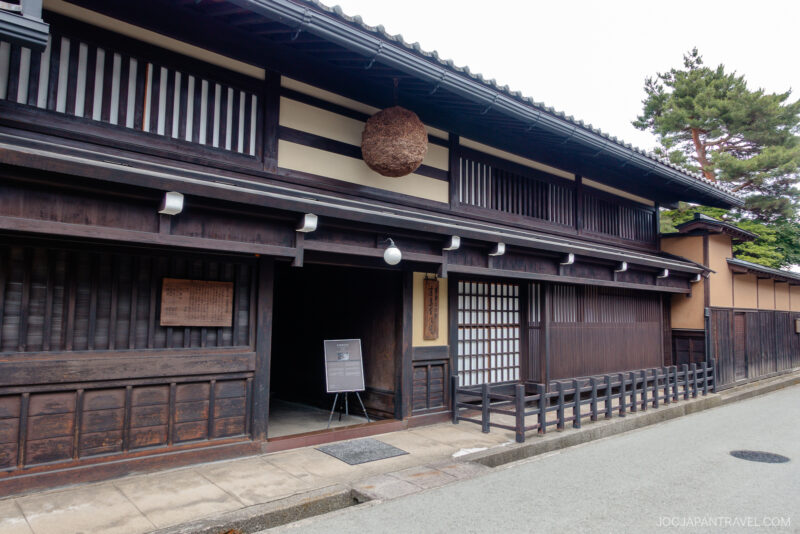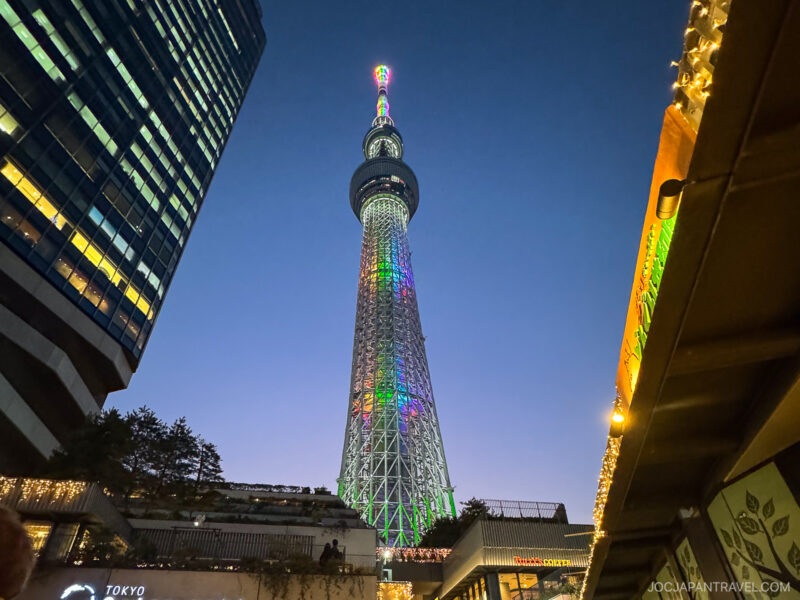This post may contain affiliate links. Please read our disclosure policy.
Wander into Shirakawa-go Village and soak up the calm charm of its thatched roofs, local crafts, and time-honored ways of life.
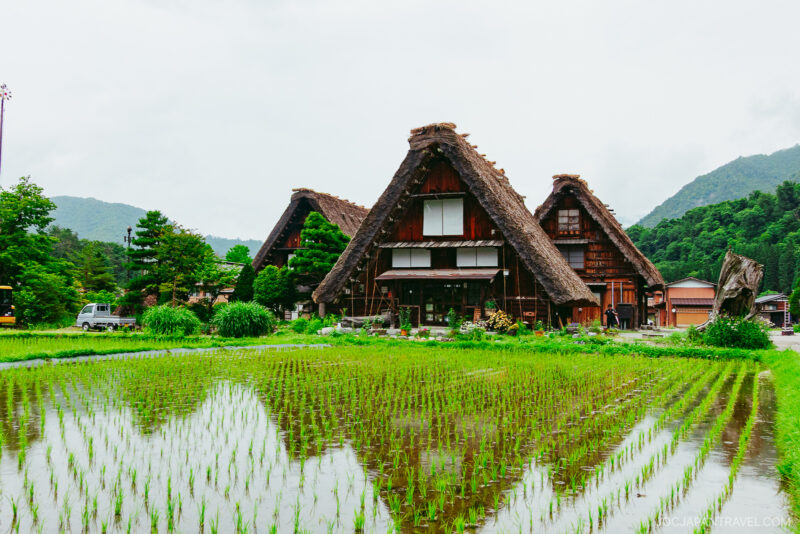
What Makes Shirakawa-go So Special?
The remote village of Shirakawa-go (白川郷) is one of Japan’s most iconic and beautifully preserved destinations. Nestled deep in the Japanese Alps of Gifu Prefecture, this UNESCO World Heritage Site is famous for its unique gassho-zukuri (合掌造り) farmhouses—steeply pitched, thatched-roof homes built to withstand heavy snow.
We visited during the summer, when green rice fields stretched across the valley and the air felt fresh and calm. The peaceful setting, the sounds of running water, and the gentle rhythm of village life made us slow down and fully take in the moment. Whether you visit in spring, fall, or winter, each season brings its own charm.
Visiting Myozen-ji Temple
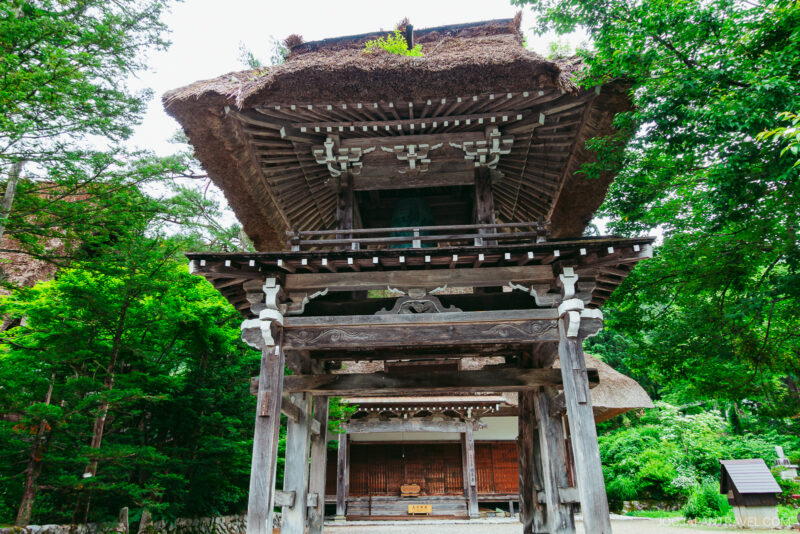
One of the most meaningful stops in the village was Myozen-ji Temple (明善寺), built in 1744. This historic Jodo Buddhist temple is rare for its gassho-zukuri architecture, including a large main hall and bell tower made with traditional wooden beams and a thick thatched roof.
The temple complex also includes a museum, where visitors can learn how Buddhism shaped local life and how the region’s unique climate influenced its building style.
What to Expect in Shirakawa-go Village
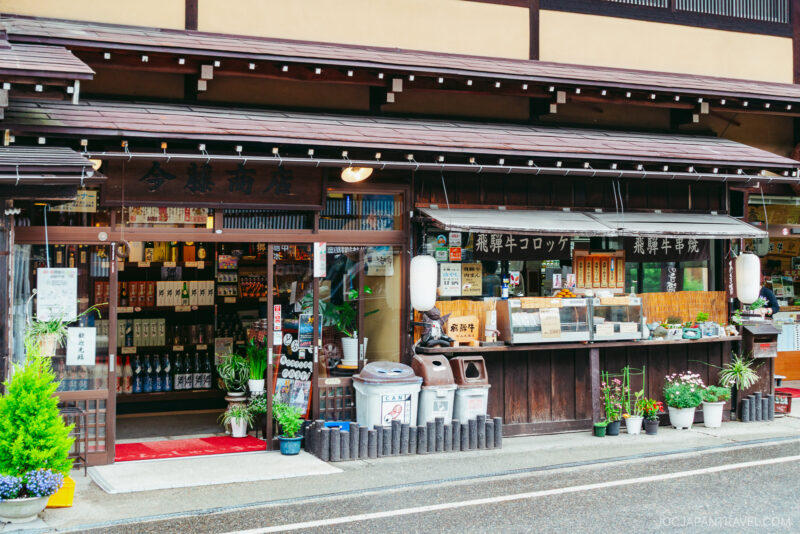
Shirakawa-go is compact and very walkable. From the bus terminal, it only takes a few minutes to reach the main street. The village is well-marked, with signs in English and Japanese, and maps are available at the entrance.
We started with a walk through the heart of the village and here are the highlights:
Gassho-Zukuri Homes
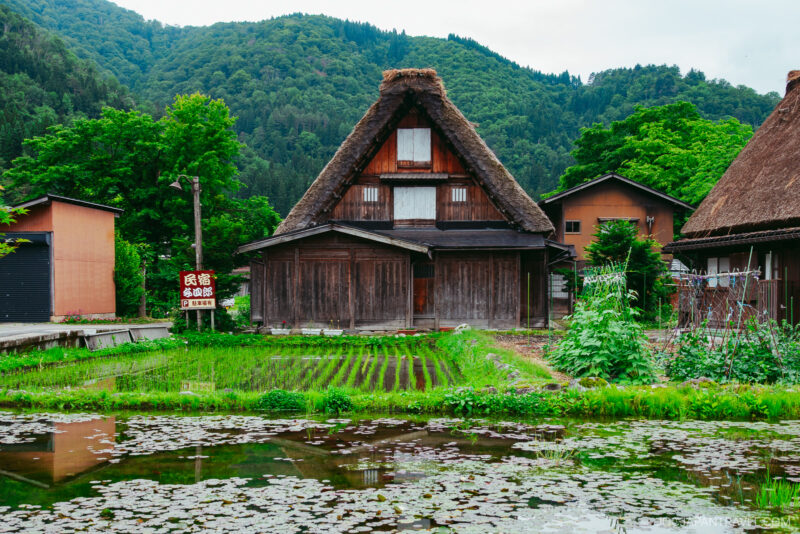
These iconic homes are built with tall, thatched roofs angled like hands in prayer. Some are still private residences, but many have been turned into museums, guesthouses, or shops.
We loved how some homes had its own garden, rice paddy, or trout stream—simple yet beautiful touches of everyday life.
Nature and Scenery
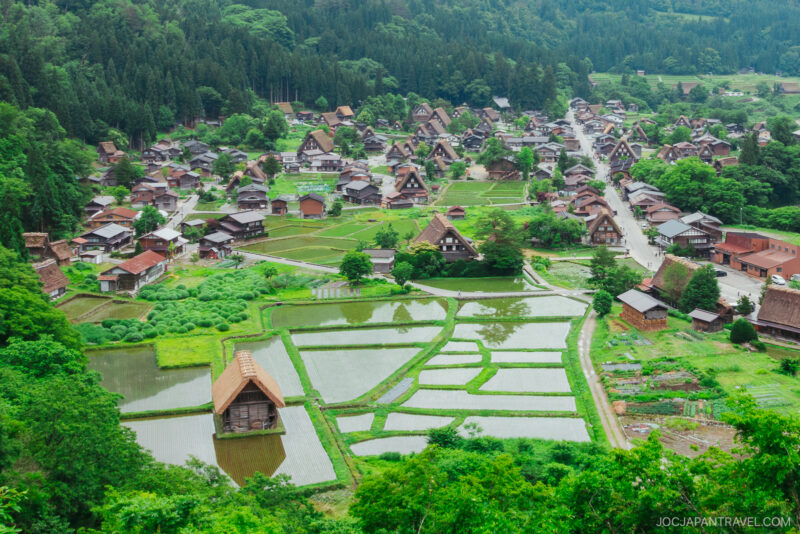
Surrounded by mountains and fields, Shirakawa-go feels like a world away. We watched clouds drift over the peaks, and our kids were fascinated by a small creek where villagers raise fish.
Local Crafts and Snacks
Small shops line the main street, many inside preserved farmhouses. We saw woodwork, hand-dyed indigo, woven straw items, and handmade ceramics.
For snacks, we tried a Hida beef korokke (croquette), grilled skewers, and fresh mochi with kinako. Everything was delicious and comforting.
Enjoying Local Life: Cafés and Artisan Shops
Shirakawa-go isn’t just about history, as it’s still home to local families and craftspeople. Many of the shops double as homes, giving you a glimpse of daily life here. Taking time to chat, browse, and taste what the village has to offer made our visit feel even more personal.
How to Get to Shirakawa-go
Bus
- There is no direct train to Shirakawa-go. Take the JR Takayama Line to Takayama Station, then transfer to a highway bus bound for Shirakawa-go.
- Total travel time: about 50 minutes from Takayama.
Private Tours
- There are many day tours to Shirakawa-go from Takayama. We took a day tour and it includes transportation to and from the village.
Pro Tip: After arriving, stop by the small information center near the bus terminal for a free walking map of the village.
Why Shirakawa-go Should Be in Your Itinerary
Shirakawa-go is absolutely a magical place to explore regardless of the season. It offers a rare glimpse of living history in one of Japan’s most scenic mountain valleys. From the storybook houses to the quiet rhythms of village life, every corner invites you to slow down and take it all in.
And if you’re dreaming of that perfect snowy postcard shot, winter is the time to visit.
More to Explore Nearby
After exploring the gassho-zukuri farmhouses of Shirakawa-go, head to Takayama for these cultural and historical highlights:
- Takayama Old Town (Sanmachi Suji) – Walk through well-preserved Edo-period streets lined with merchant homes, sweet shops, and sake breweries.
- Takayama Jinya – Visit the only surviving Edo-era government outpost in Japan, with traditional tatami rooms and a historical archive.
- Hida Folk Village – Explore a hillside collection of relocated thatched-roof houses showcasing rural life in the Hida region.
- Miyagawa Morning Market – Taste local flavors and browse handmade crafts at this bustling riverside market.

